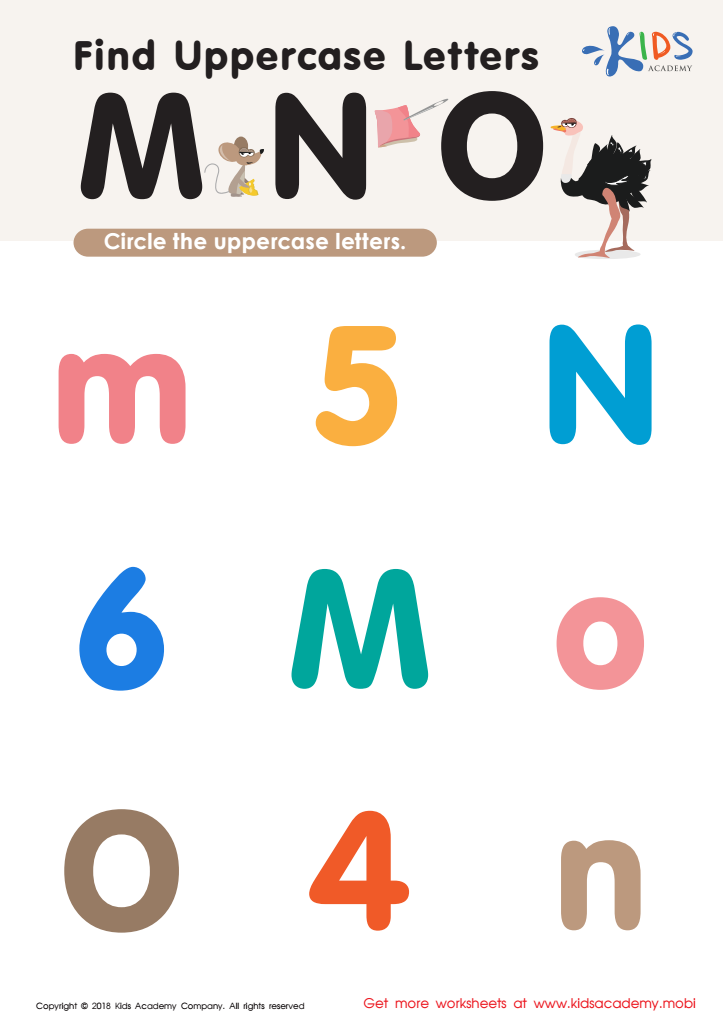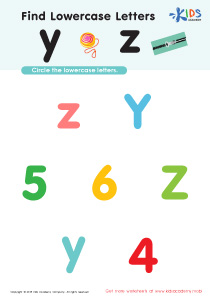Uppercase identification Normal Uppercase Letters Worksheets for 4-Year-Olds
5 filtered results
-
From - To
Welcome to our Uppercase Identification Normal Uppercase Letters Worksheets for 4-Year-Olds! These engaging and educational worksheets are designed to help young learners recognize and identify upper case letters. Filled with fun activities, colorful illustrations, and interactive exercises, they will captivate your child's attention while enhancing their literacy skills. Each worksheet focuses on different letters, helping children reinforce their understanding of the alphabet in a playful way. Perfect for pre-K or homeschooling, our worksheets promote fine motor skills and encourage cognitive development. Download now and watch your child's confidence in uppercase letter recognition soar! Start their learning journey today!


Find Uppercase Letters Worksheet


Find Uppercase Letters J, K, and L Worksheet


Find Uppercase Letters A, B, and C Worksheet


Find Uppercase Letters V, W, X Worksheet


Find Uppercase Letters M, N, and O Worksheet
Uppercase letter identification plays a critical role in early literacy development for 4-year-olds, and both parents and teachers should prioritize this skill. Recognizing uppercase letters is fundamentally important for several reasons. First, uppercase letters are integral to writing names, which provides a personal connection and motivation for young learners to engage with letters. This recognition lays the groundwork for reading success, as many words, signs, and labels children encounter start with uppercase letters.
Additionally, understanding uppercase letters helps foster phonemic awareness, a key component of reading readiness. It encourages children to connect sounds with symbols, leading to improved spelling and writing skills as they progress. Introduction to uppercase letters frequently occurs in playful contexts, such as songs, games, and storytime, making the learning both enjoyable and effective.
Moreover, parents and teachers who emphasize uppercase letter recognition can create a robust foundation for literacy at home and in school. By engaging in activities that promote recognition, such as alphabet books and interactive games, adults can instill a sense of curiosity and confidence in children. Overall, caring about uppercase letter identification strengthens children's literacy skills, setting them on a path for future academic success.
 Assign to My Students
Assign to My Students





















